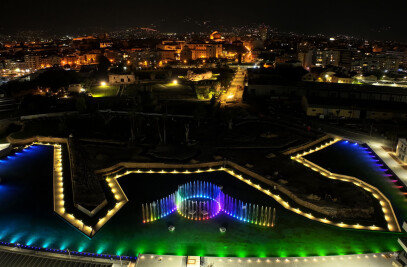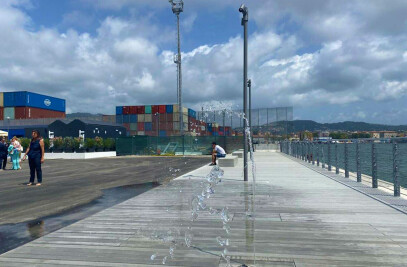Restoration of a public fountain for crystal-clear water that also welcomes local wildlife
In 2019, the City of Pordenone witnessed the realization of five urban redevelopment projects, including the reorganization and improvement of Largo San Giorgio, one of the symbolic places of Pordenone's identity. In this context, on the new square in front of the church bearing the same name, an octagonal-shaped fountain was built, mirroring the nearby bell tower and resembling the shape of a baptismal font.

The original design of the fountain, created by third parties, did not include a filtration system, as it was believed that the water movement system alone would be sufficient to maintain a clear and algae-free surface. However, this choice quickly led to severe problems of uncleanliness and water pollution due to the absence of a filtration system, turning the fountain into a green basin full of algae. Consequently, in 2022, the Pordenone Municipal Administration commissioned Forme d'Acqua Venice Fountains to solve the problem.
Following a thorough analysis of all the MEP components' condition, in order to ensure clean and healthy water, it was necessary to redesign the entire hydraulic system of the fountain, introducing a highly efficient and wildlife-friendly biological filtration system, as well as a new water pump for the water movement.

The biological filter produces clear water (with a maximum flow rate of 17,000 l/h) thanks to a combination of the filtration system and UV-C technology. Its operation is simple and requires low energy consumption: the filter pump pushes the water into the filter box, where it passes through three different types of filter media that mechanically trap dirt particles, while suspended substances and biological sediment settle at the bottom of the container. Beneficial bacteria develop on the expandable filter media, biologically cleaning the water: the first stage involves the settlement of bacteria for nitrification, converting initial ammonia into nitrite and subsequently into nitrate, while in the final stage, bacteria for nitrification and denitrification settle, converting nitrate into nitrogen. Before being reintroduced into the circuit, the water undergoes a purification phase where it is irradiated with UV-C light from the clarifier, which eliminates suspended algae and pathogens (bacteria and germs).
Thanks to this implementation, the urban space has been completely revitalized, and the public fountain has been restored to fulfill its role as a visually pleasing element and a psychotherapeutic destination. Moreover, the water surface has become a meeting point for birds, as the biological filtration ensures that the water does not contain chemicals that could harm their health.


































